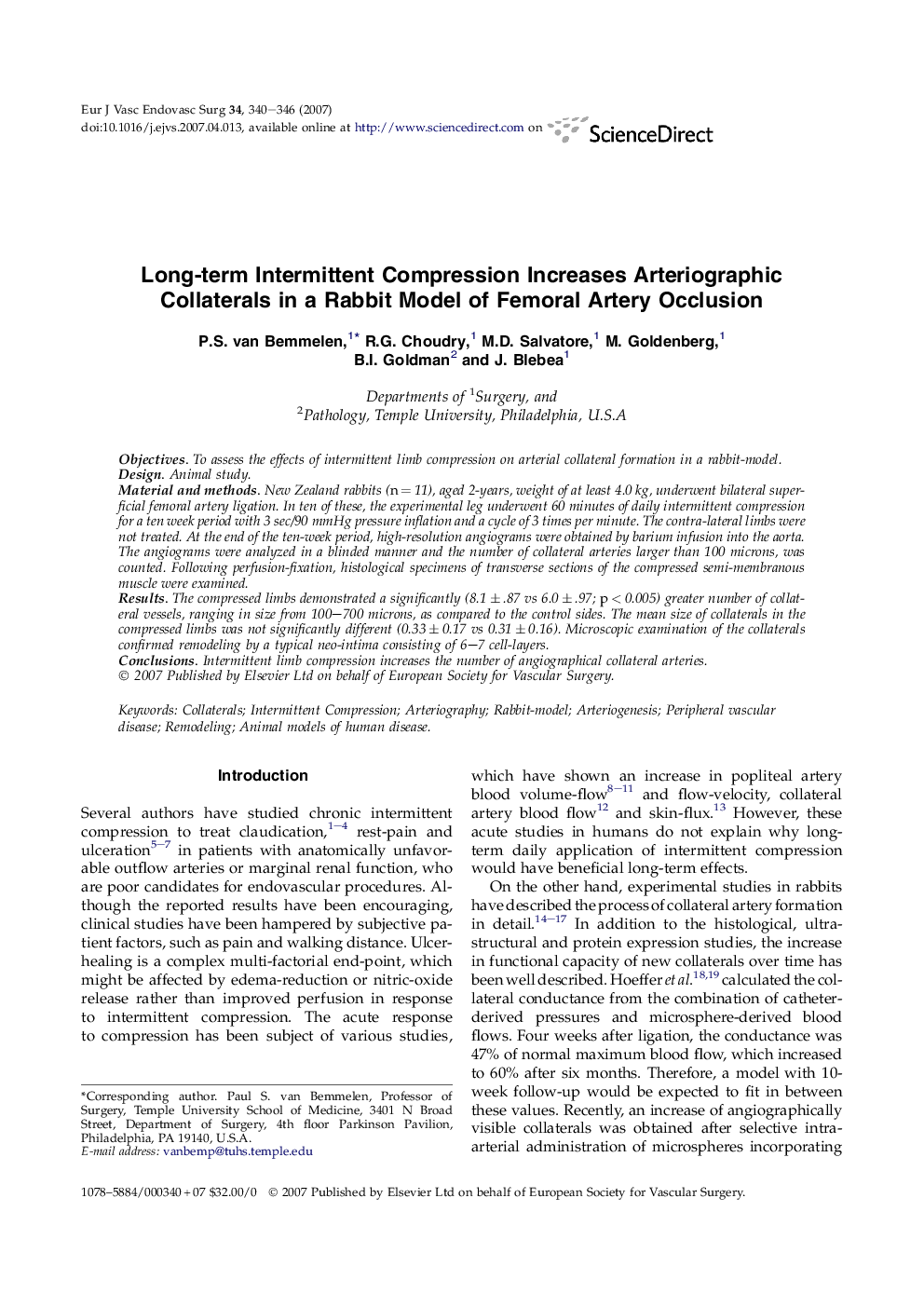| Article ID | Journal | Published Year | Pages | File Type |
|---|---|---|---|---|
| 2913877 | European Journal of Vascular and Endovascular Surgery | 2007 | 7 Pages |
ObjectivesTo assess the effects of intermittent limb compression on arterial collateral formation in a rabbit-model.DesignAnimal study.Material and methodsNew Zealand rabbits (n = 11), aged 2-years, weight of at least 4.0 kg, underwent bilateral superficial femoral artery ligation. In ten of these, the experimental leg underwent 60 minutes of daily intermittent compression for a ten week period with 3 sec/90 mmHg pressure inflation and a cycle of 3 times per minute. The contra-lateral limbs were not treated. At the end of the ten-week period, high-resolution angiograms were obtained by barium infusion into the aorta. The angiograms were analyzed in a blinded manner and the number of collateral arteries larger than 100 microns, was counted. Following perfusion-fixation, histological specimens of transverse sections of the compressed semi-membranous muscle were examined.ResultsThe compressed limbs demonstrated a significantly (8.1 ± .87 vs 6.0 ± .97; p < 0.005) greater number of collateral vessels, ranging in size from 100–700 microns, as compared to the control sides. The mean size of collaterals in the compressed limbs was not significantly different (0.33 ± 0.17 vs 0.31 ± 0.16). Microscopic examination of the collaterals confirmed remodeling by a typical neo-intima consisting of 6–7 cell-layers.ConclusionsIntermittent limb compression increases the number of angiographical collateral arteries.
